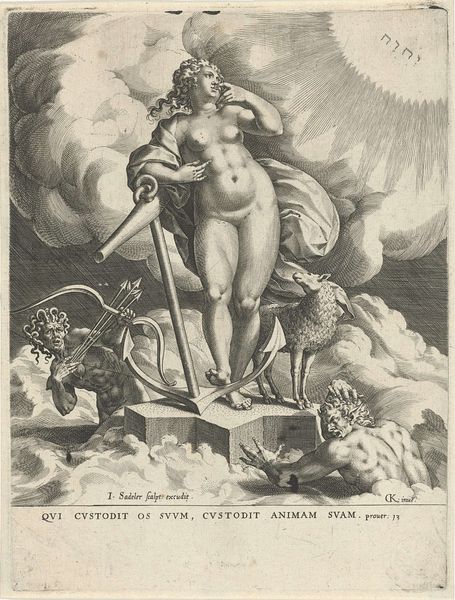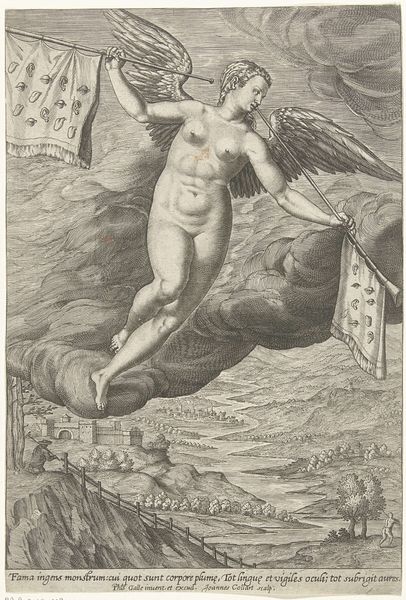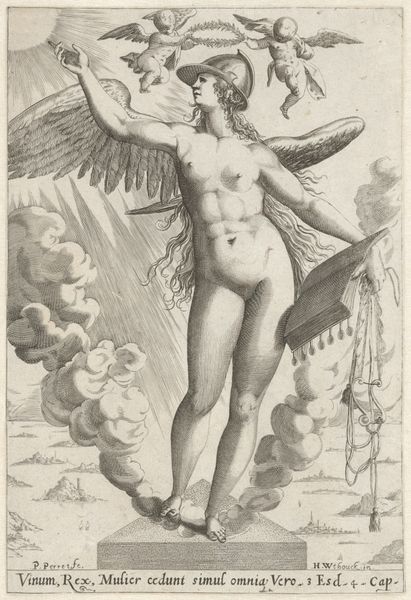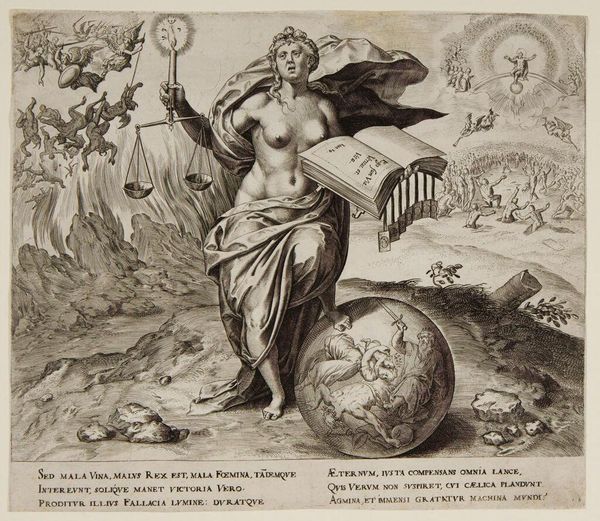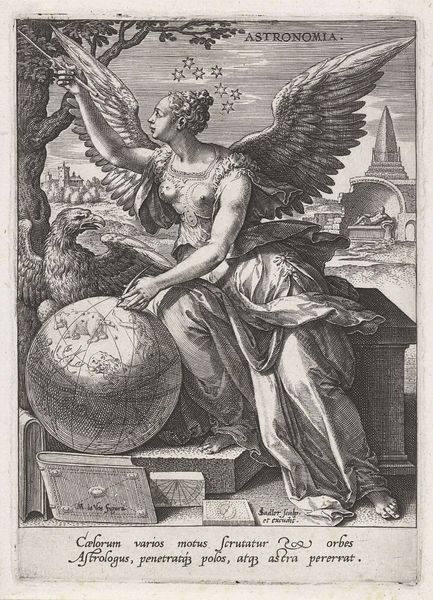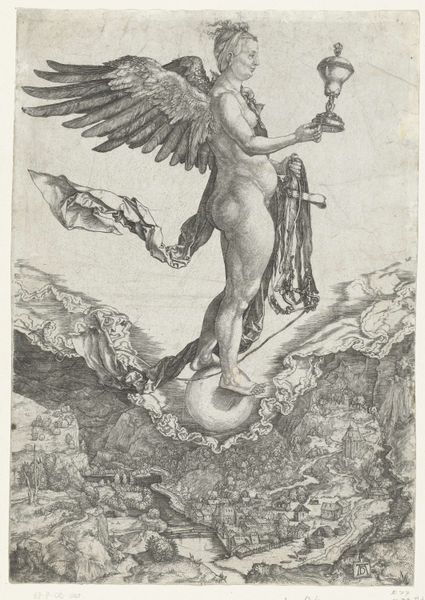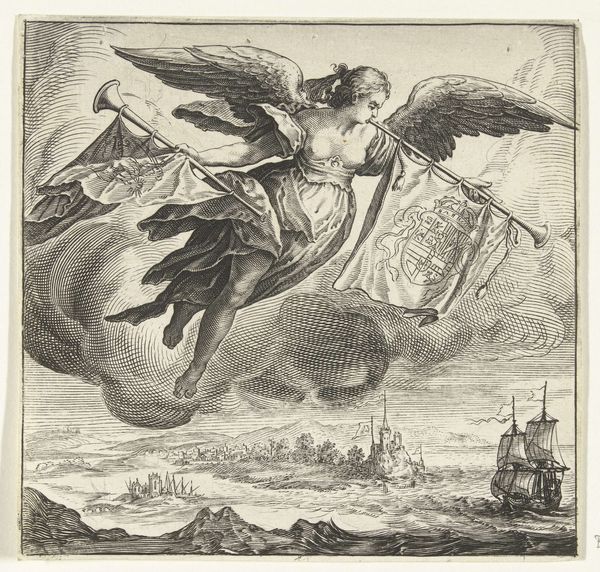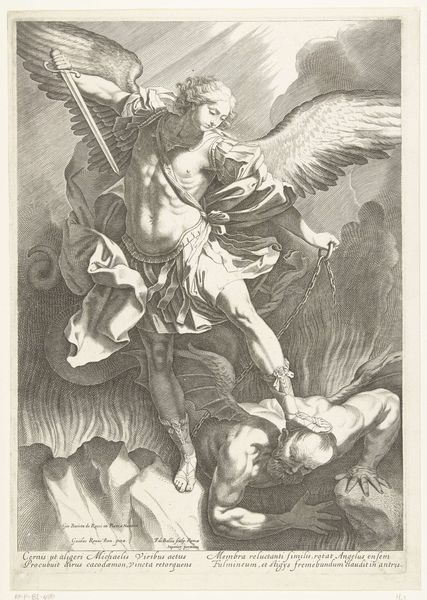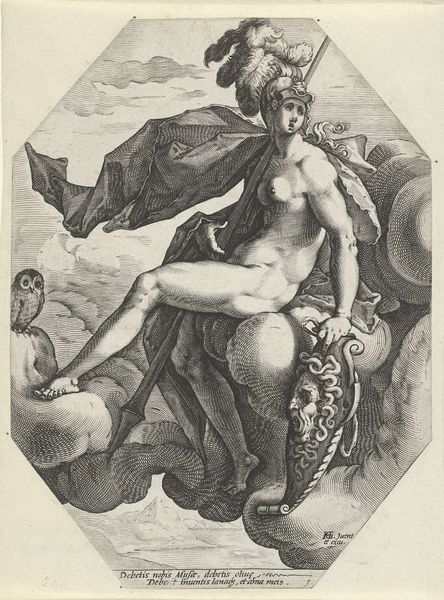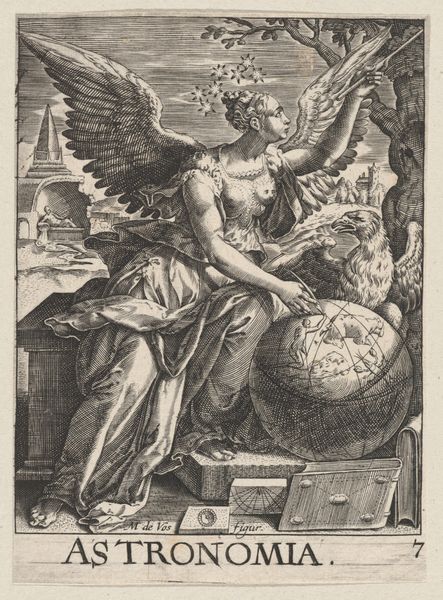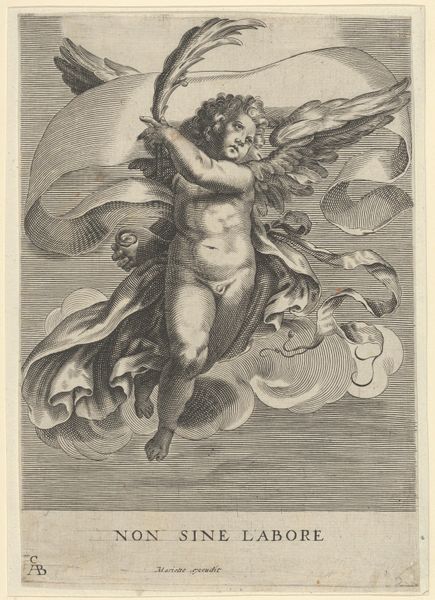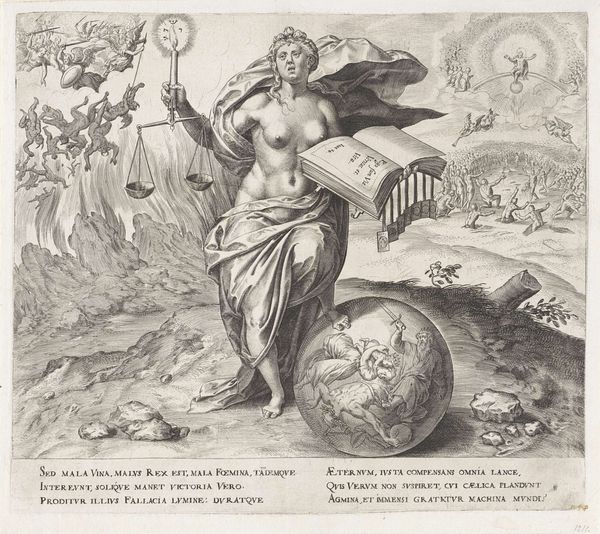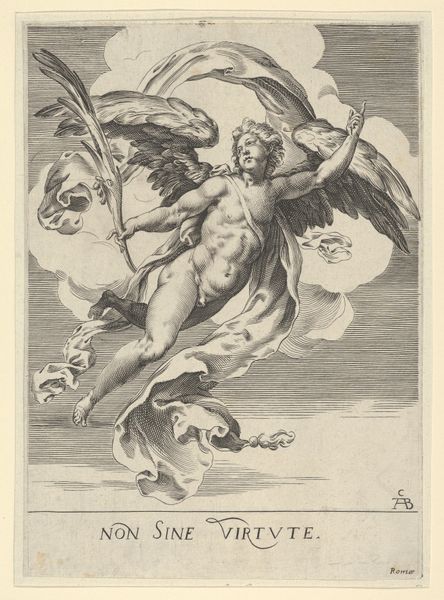
Dimensions: height 154 mm, width 118 mm
Copyright: Rijks Museum: Open Domain
Curator: Here we have Johann Sadeler I's "Allegory of Fame," created sometime between 1560 and 1600. It's an engraving currently held here at the Rijksmuseum. Editor: It’s striking how the crisp lines of the engraving almost give the figure a metallic feel. It's both ethereal and grounded, if that makes any sense. What was the intended audience and reception for engravings such as this? Curator: This piece participates in a tradition of allegorical representations in art, meant for educated, elite audiences, as prints at the time facilitated the broader distribution of such imagery beyond painting commissions. Allegory, of course, employs symbolic figures to represent abstract concepts. Note how Fame is elevated—literally sitting above the world. Editor: Right, sitting on top of a cloud looking down at the world beneath her. This focus on the earth—is it a comment on colonialism and a rapidly changing, increasingly globalized world during that time period? And I am thinking about the artist as a maker as well, how could we describe this period of intense global transition and artistic transformation? Curator: Well, the power of representation certainly mirrors Europe’s increasing world power. As an engraving, the labor put into carving the matrix for printing highlights both skill and reproducibility. This would permit widespread viewership within courtly and intellectual circles and allow for standardization of images to portray status and authority. The material nature of printmaking speaks to a wider network of artisans beyond the "fine arts." Editor: It is interesting to consider the printing, almost as mass production, of an allegorical figure such as fame. With her trumpet, it’s a visualization of propaganda. This suggests how readily images can construct reputations—raising some figures while silencing others through very material processes of reproduction and distribution. Curator: Exactly! The act of engraving itself becomes a medium of power—carefully shaping perceptions and reinforcing socio-political hierarchies in an expanding, increasingly visually driven world. And the distribution of these images helps construct the reputation of the artists involved as well. Editor: In a way, it is not that different today; it gives one pause to reflect on contemporary image production and circulation. So thank you, Johann Sadeler I, for making the perfect item for introspection! Curator: A telling image indeed, offering insights into both art and society of the early modern period.
Comments
No comments
Be the first to comment and join the conversation on the ultimate creative platform.
